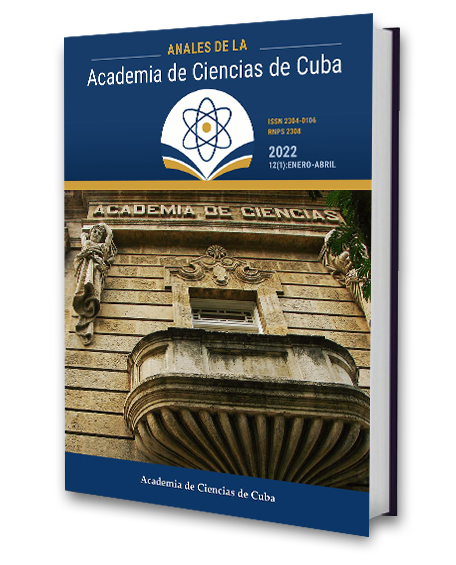Cuban natural sorbents for the decontamination and/or determination of toxic metals in waters by solid phase extraction
Keywords:
NZ zeolite, Aspergillus niger O5 inactive biomass, toxic metals, pre-concentration, removalAbstract
Introduction: Natural sorbents have been widely used in environmental studies for decades. These materials can be used to develop analytical procedures to monitor and/or remove toxic metals from waters. Among the heavy metals most used in industry and therefore frequently found in water, are Pb, Cd and Ni with high harmful effects on human health, even at relatively low concentrations in the order of parts per million. On the other hand, some of Platinum salts are used in the pharmaceutical industry and other industrial processes that generate toxic waste. Two natural Cuban sorbents are used in this research, the inactive biomass of the Aspergillus niger O5 fungus and the purified NZ zeolite from Tasajeras deposit, with and without chemical treatments. The purpose has been to characterize these materials as sorbents to develop analytical procedures for preconcentration / removal of Pb (II), Ni (II), Cd (II) and Pt (IV) in drinking water. Methods: The determination of metals during the sorption studies was carried out in the liquid and solid phases indistinctly. The AAS with flame, UV-Vis spectrophotometry, XRF and PIXE techniques were used. The chemical-physical characterization of sorbents was also carried out with modern techniques (SEM-EDS; IR; XRD, XPS, RBS, ERDA), which contributed to suggesting mechanisms of metal-sorbent interaction. Results: The maximum sorption capacity values of sorbents were: Lead: 8.6 and 75 mg·g-1 in biomass treated with HCl and zeolite treated with NH3, respectively; Platinum: 80 mg·g-1 in biomass treated with CTAB; Nickel: 28 mg·g-1 in zeolite treated with NaOH and Cadmium: 66 mg·g-1 in untreated zeolite. Conclusions: Theses results confirm the high potentiality of the studied sorbents for the preconcentration / removal of Pb (II), Ni (II), Cd (II) and Pt (IV) from drinking water.Downloads
Published
How to Cite
Issue
Section
License
The journal Anales de la Academia de Ciencias de Cuba protects copyright, and operates with a Creative Commons License 4.0 (Creative Commons Attribution-NonCommercial License 4.0). By publishing in it, authors allow themselves to copy, reproduce, distribute, publicly communicate their work and generate derivative works, as long as the original author is cited and acknowledged. They do not allow, however, the use of the original work for commercial or lucrative purposes.
The authors authorize the publication of their writings, retaining the authorship rights, and assigning and transferring to the magazine all the rights protected by the intellectual property laws that govern in Cuba, which imply editing to disseminate the work.
Authors may establish additional agreements for the non-exclusive distribution of the version of the work published in the journal (for example, placing it in an institutional repository or publishing it in a book), with recognition of having been first published in this journal.
To learn more, see https://creativecommons.org






